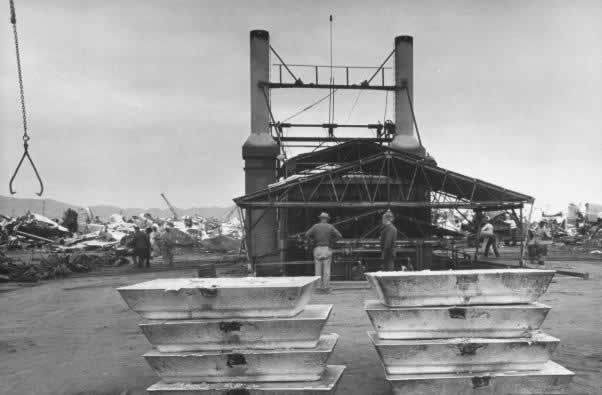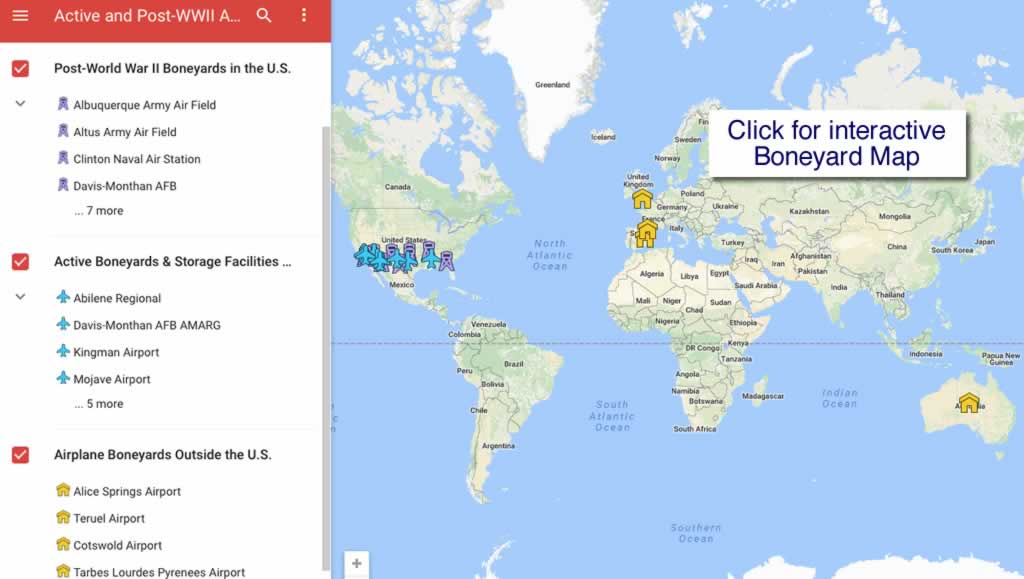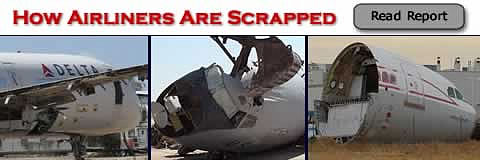
Kingman AAF Boneyard and Kingman Airport (IGM) in Arizona
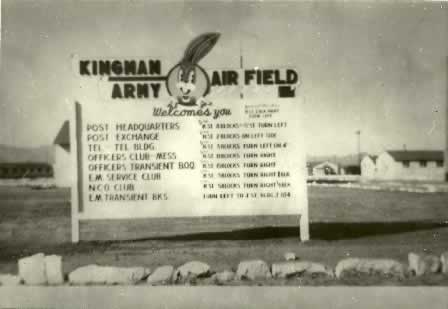 Entrance at Kingman Army Air Field in Arizona during World War II (photo by Kingman Army Air Field Museum) |
Kingman Army Air Field ... History of the Early Days
The Army Air Force Flexible Gunnery School, Kingman, Arizona, was built at the start of World War II as an aerial gunnery training base, located on approximately 4,145 acres in Mohave County next to U.S. Route 66. Arizona was an ideal location due to its sparse low population and miles of wide open spaces.
It offered its first classes in January of 1943, and was renamed Kingman Army Air Field (KAAF) later that year with the primary mission of training gunners for the B-17 Flying Fortress.
The air field became one of the Army Air Corps' largest, training 35,000 individuals. Its facilities included housing for 3,200 enlisted men, 3,070 cadets and 430 officers. "Bugs Bunny" became the base's official mascot (see photo of sign above) because of the large number of rabbits that inhabited in the area. The base newspaper was known as the "Cactus". With the end of the war, additional training bases were not needed, and Kingman was ordered to close.
Kingman Army Air Field After World War II
Within a year of the signing of peace treaties, about 34,000 airplanes had been moved to 30 locations within the U.S. The War Assets Administration (WAA) and the Reconstruction Finance Corporation (RFC) handled the disposal of these aircraft.
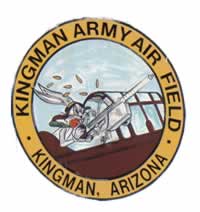 |
The RFC established depots around the country to store and sell surplus aircraft. By the summer of 1945, at least 30 sales-storage depots and 23 sales centers were in operation. In November 1945, it was estimated a total of 117,210 aircraft would be transferred as surplus.
One of the locations chosen was Kingman, with its huge open spaces, good weather for aircraft storage, and three runways, one of which was 6,800 feet in length.
The RFC quickly established Storage Depot No. 41 at Kingman, and by October of 1945 planes were being flown in, parked, and processed. Planes were typically parked by type. As many as 150 airplanes a day were soon flying into Kingman, and the total aircraft inventory by the end of 1945 reached about 4,700.
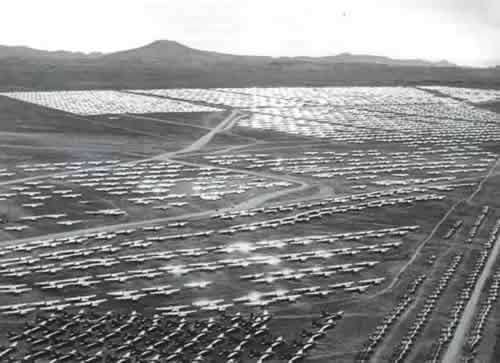 Aircraft parked and awaiting sale, or the furnaces, at Kingman AAF after World War II |
It is estimated that a total of about 5,500 airplanes were flown to Kingman in 1945 and 1946 for sale and disposal.
The Aircraft Scrapping and Smelting Project at Storage Depot 41 at Kingman
The contractor for aircraft scrapping at Kingman was the Wunderlich Contracting Company of Jefferson City, Missouri, who received an 18-month contract from the federal government for $2.78 million to reduce 5,400 aircraft to aluminum ingots.
Active duty military personnel typically flew the aircraft into Kingman, and civilian employees would handle parking and classification. To accommodate the large numbers of employees, tent cities were erected on site. In subsequent months, brand new aircraft directly from assembly lines were even disposed of at Kingman.
Fuel was drained from the aircraft and sold. Aircraft engines were then removed and placed in rows on the desert floor.
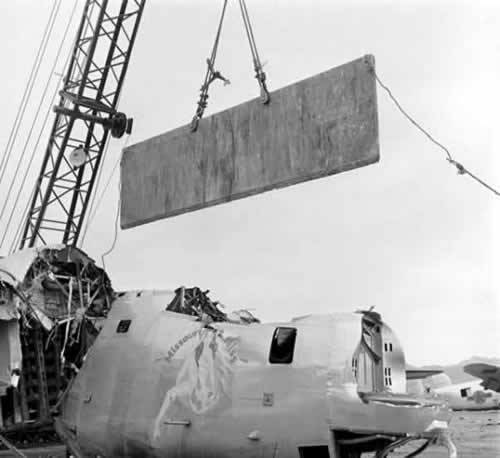 Consolidated B-24 Liberator "Missouri Miss" meets the guillotine at Kingman Army Air Field and Storage Depot 41 |
By the time the planes reached Kingman, most of the ordnance (predominantly .50 cal machine guns and Norden Bombsights) had already been removed at other temporary storage depots. However, a few planes did arrive with some machine guns and a few Norden Bombsights, which were temporarily and securely stored. The guns were retrieved by the government, but the Nordens were 'demilled' using a sledgehammer.
Interior items of the aircraft such as radios, oxygen equipment, handguns, manuals, life rafts, fire extinguishers and instruments were removed.
The main aircraft airframe was then sliced into major pieces using a guillotine. Some hand cutting of smaller parts was also done.
The final step was placing parts into the smelter, or furnace, for melting. Three furnaces were operated at Kingman for melting about 70% of an airplane's metal components into ingots. The furnaces were run 24 hours a day, and could consume up to 35 aircraft a day.
The Wunderlich contract at Kingman was successful, and resulted in the recovery of significant resources:
- 46 millions pounds of aluminum
- 6 million pounds of aluminum from engines
- 5 million pounds of aluminum propellors
- 21 million pounds of steel
- 1.6 million gallons of aviation fuel
- 256,000 gallons of oil
A total of 85 reconnaissance aircraft, 615 fighters, 54 light bombers, 266 medium bombers and 4,463 heavy bombers were disposed of. These 5,483 aircraft scrapped by Wunderlich at Kingman generated $7.5 million in gross income.
By July of 1948, less than three years since the end of WWII hostilities, the job was done. A huge part of the American airpower fleet had been reduced to ingots. Storage Depot 41 and Kingman was returned to the county as a municipal airport.
See the photo essay below on this page with photos of the scrapping and smelting process used at Kingman.
Types of Aircraft Sent to Kingman Air Field After World War II
Among the aircraft types and quantities shipped to Kingman Air Field for storage or smelting were the following:
-
A-26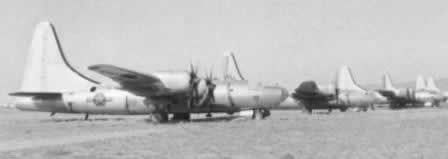
B-32 Dominators awaiting the furnaces at Kingman AAF in Arizona after World War II - B-17 Flying Fortress
- B-24 Liberator
- B-25 Mitchell
- B-26
- P-38
- P-40 Warhawk
- P-47 Thunderbolt
- P-63
- and others
In addition, 38 of the military’s 118 Consolidated (Convair) B-32 "Dominator" heavy bombers were flown to Kingman, many directly from the assembly line in Fort Worth. Some TB-32 trainers were also sent to Kingman.
Views of Kingman Army Air Field in the Post-War Period
B-17G "Five Grand" S/N 43-37716 awaiting the scrapping process at Kingman AAF in Arizona. This was the 5,000th B-17 built by Boeing in Seattle in support of the World War II effort. It was unique in that on it were written the signatures of Boeing workers. In wartime action, it flew 78 missions with the 96th Bomb Group in England, as reported in LIFE Magazine. |
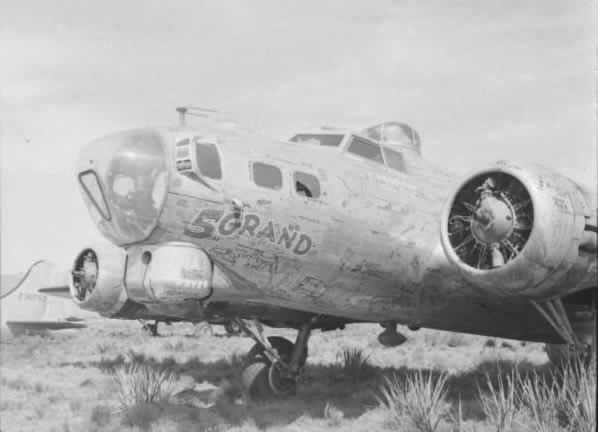 |
WWII Bomber Scrapping and Melting at the Kingman Army Air Field boneyard in Arizona
Rows of B-24 Liberators await the scrap heap at Kingman AAF in Arizona "Old Black Magic" 0333 in the foreground, seen in LIFE Magazine |
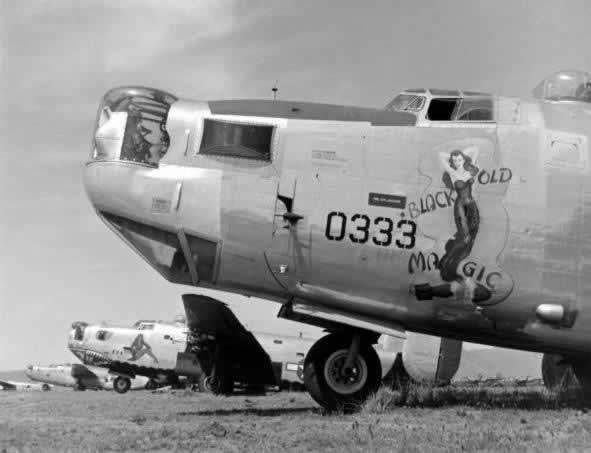 |
Ford B-24L-15-FO Liberator "Mabel's Labels" ... "Gimme a Great Big Smile!" S/N 44-49854 ... Served with the 64th Bombardment Squadron, 43rd Bomb Group, 5th Air Force Shown below with engines removed and awaiting the guillotine and smelter, April, 1947 |
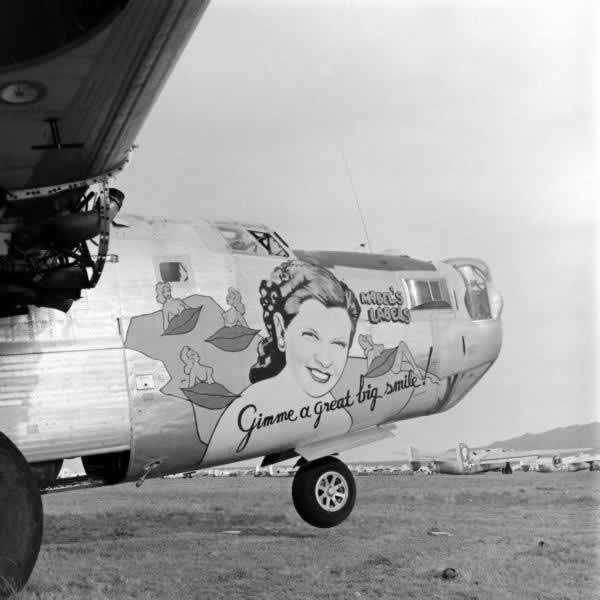 |
Rows of aircraft engines removed from surplus B-17 and B-24 bombers at the Kingman AAF boneyard |
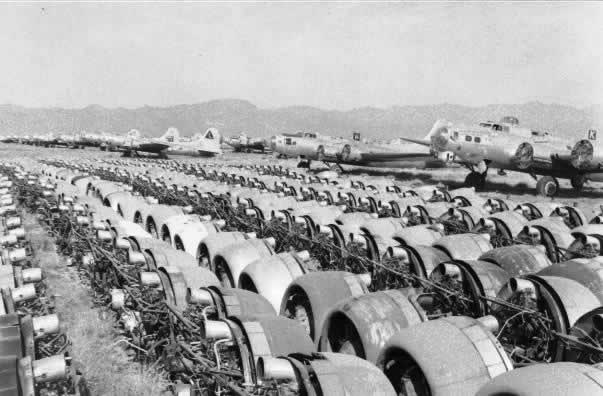 |
Once cut in pieces, aircraft remnants are moved to the smelter (in the distance) |
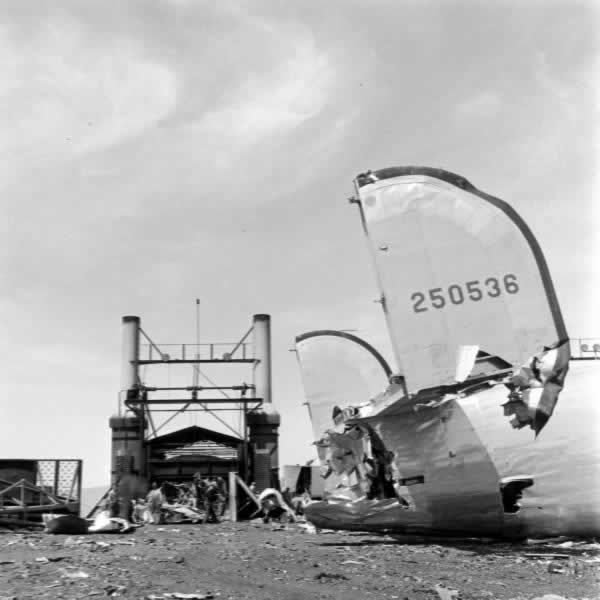 |
Stacks of aluminum ingots ...
the remains of the great American World War II bomber fleet |
Kingman Airport and Industrial Park Today
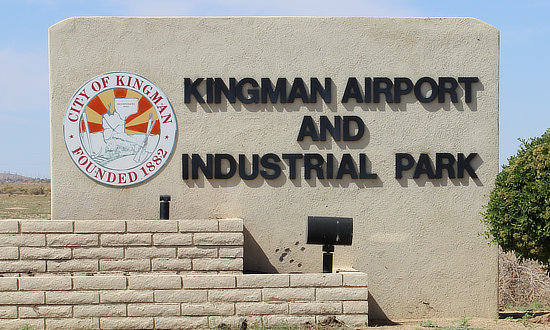 Entrance to Kingman Airport and Industrial Park (photo by AirplaneBoneyards.com staff) |
Today, the Kingman Airport & Industrial Park, located five miles north of Interstate 40 in Kingman, Arizona, spans 4,000 acres. The industrial park is a vibrant commercial community, and home to more than 70 businesses in diverse fields, including the temporary storage of airliners. It employs over 2,100 people.
For more information visit the website of the Kingman Municipal Airport
On our most recent visits to Kingman dozens of airliners were parked, including those from American Eagle, Continental Express, DHL, SAS and other airlines (see photos below). The airplanes are lined up, with engines, windows and tires covered for protection.
Airliners are stored by Kingman Airline Services, an FAA approved Part 145 repair station and storage facility. The company operates an active storage facility for commercial jet, turbo-prop and corporate aircraft.
Aircraft are also stored and maintained at Kingman by Jet Yard Solutions, which is also an FAA Part 145 repair station.
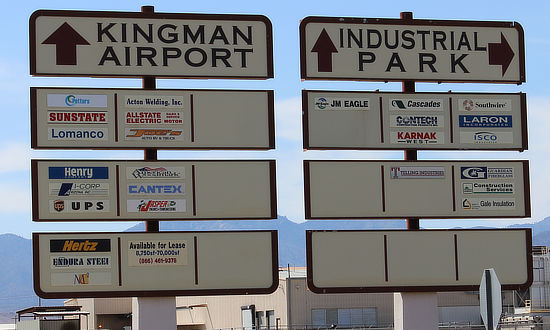 The Kingman Airport and Industrial Park is a vibrant facility hosting a number of businesses (photo by AirplaneBoneyards.com staff) |
The airport is rated for DC-9 and 737-type aircraft with a 6,830-foot by 150-foot main runway. The FAA Identifier Code is IGM.
The industrial park includes rail service by the Burlington Northern Santa Fe Railroad, and features close proximity to Historic U.S. Route 66 and Interstate 40.
The park offers to its clients redundant electrical transmission, fiber optic communications, natural gas, water, sewer and other service amenities.
Aircraft parked at Kingman are behind fences and are not accessible to the general public.
Kingman Airport Cafe
A popular local eatery is located at the airport, the Kingman Airport Cafe, located right on the runway where you can watch airplanes come and go up-close. Breakfast, brunch and lunch are served all day every day. Customers enjoy omelets, french toast, pancakes, burgers, country fried steak, salads, sandwiches, and more! Dinners are available on Friday evenings. Phone 928.757.4420.
![]() ... about how airliners are disassembled and scrapped
... about how airliners are disassembled and scrapped
Visiting the Kingman Area?
Kingman is positoned for travel destinations in several directions, from Las Vegas and the Hoover Dam to the north, to Grand Canyon National Park to the east.
Historic Route 66 passes right through Kingman and visitors enjoy a variety of road trip options in the area, from motorcylce ventures to jeep tours. Heading west from Kingman, tourists enjoy the old mining town of Oatman. Heading east on Route 66 takes you to the eclectic town of Seligman and its sourvenir shops, diners and motels.
For additional information on the airport and industrial park, contact the City of Kingman, 7000 Flightline Drive, Kingman AZ 86401, or phone 928.757.2134
We also highly recommend a visit to the website of the Kingman Airport Authority.
Other area websites of interest include the City of Kingman, ExploreKingman tourist information and the Kingman Chamber of Commerce.
Aerial Views of Current Day Kingman Airport
Aerial view of Kingman Airport with airliners in storage in 2022 |
 |
Close up aerial view of Kingman Airport airliner storage area (Google Maps - 2022) |
 |
Photos of Present-Day Kingman Airport
Continental Airlines Express jets in storage in the desert at the Kingman Airport in Arizona |
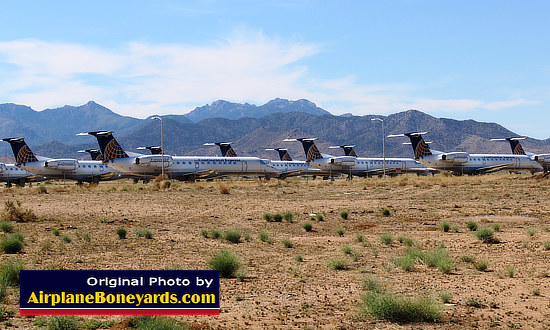 |
Continental ExpressJets in storage at the Kingman Airport in Arizona |
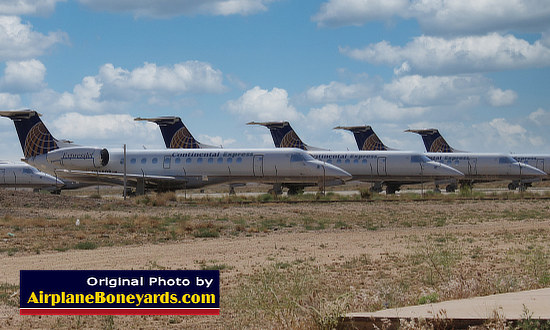 |
American Eagle airliners stored at the Kingman Airport in Arizona |
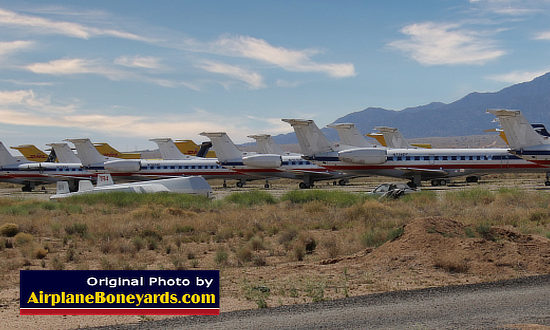 |
DHL Airbus jet freighters in storage at the Kingman Airport |
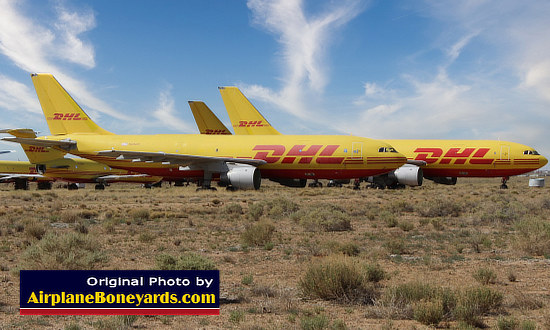 |
Star Alliance jetliner parked at the Kingman Airport |
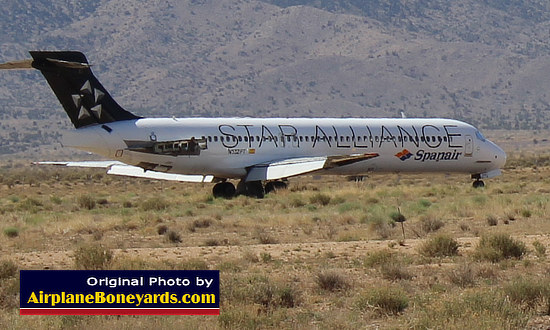 |
Kingman Army Air Field Historical Society and Museum |
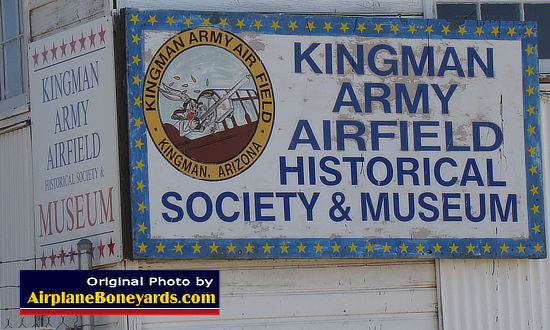 |
Interactive Map of Kingman, Arizona
Map of locations of active and post-WWII airplane boneyards and plane storage facilities in the United States & worldwide
